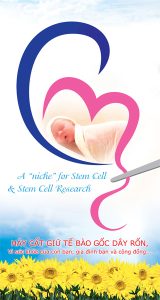Exosome RNA, June 10 , 2024

Understanding Acute Kidney Injury (AKI)
Acute kidney injury (AKI) is a serious condition where the kidneys suddenly stop working correctly. This can happen for many reasons, such as severe infections, certain medications, or reduced blood flow to the kidneys. If not treated promptly, AKI can lead to high rates of illness and death. Despite significant research, effective treatments for AKI remain limited.
What Are Extracellular Vesicles (EVs)?
Extracellular vesicles (EVs) are tiny, membrane-bound particles released by various types of cells in the body. These vesicles can carry bioactive molecules like proteins, lipids, and RNA, which allow them to communicate with other cells. Think of EVs as tiny delivery trucks transporting important messages and materials between cells.
The Promise of EVs in Treating AKI
Researchers are exploring the use of EVs as a novel, cell-free therapy for AKI. The idea is that EVs can deliver therapeutic molecules directly to the injured kidneys, promoting healing and recovery. A review by researchers at the Taipei Medical University focuses on understanding the biology of EVs and how they can be harnessed for treating AKI.
Technical Aspects and Therapeutic Applications
First, they describe the technical aspects of working with EVs. These vesicles are often derived from cultured cells in a laboratory setting. Researchers can isolate and purify EVs from these cells, ensuring they contain the desired therapeutic molecules. The researchers emphasize the importance of these technical details to maximize the effectiveness of EVs as a treatment.
Using Multi-Omic Approaches
To fully understand how EVs work, scientists use multi-omic approaches. This means they analyze the various types of molecules within EVs, including microRNAs (miRNAs), proteins, and genetic material. By doing so, they can uncover the specific mechanisms through which EVs promote healing and address unresolved questions in AKI research.
Stem Cell vs. Non-Stem Cell-Derived EVs
The therapeutic potential of EVs can vary depending on their source. The researchers categorizes EVs into two main types: those derived from stem cells and those from non-stem cells.
Stem Cell-Derived EVs: These EVs are obtained from stem cells, which have the unique ability to develop into different types of cells in the body. Stem cell-derived EVs are particularly promising because they carry potent regenerative molecules that can aid in kidney repair.
Non-Stem Cell-Derived EVs: These EVs come from other types of cells and can also offer therapeutic benefits. The researchers highlight experimental evidence supporting the effectiveness of both types in treating AKI.
Challenges and Opportunities in Clinical Translation
While the research on EVs in animal models is promising, translating these findings into human patients presents several challenges. Some of these include ensuring the safety and consistency of EV-based therapies, understanding the best ways to deliver these vesicles to patients, and navigating regulatory hurdles.
Despite these challenges, the researchers highlight the significant opportunities that EVs offer. As researchers continue to refine their techniques and deepen their understanding of EV biology, the potential for developing effective, cell-free therapies for AKI becomes more tangible.
Conclusion
Extracellular vesicles represent a cutting-edge frontier in the treatment of acute kidney injury. By leveraging the natural communication and healing properties of these tiny vesicles, scientists hope to develop new therapies that can reduce the high morbidity and mortality associated with AKI. Continued research and innovation in this field hold promise for transforming how we approach kidney injury and improving outcomes for patients.
References
David J Lundy, Barbara Szomolay, Chia-Te Liao, Systems Approaches to Cell Culture-Derived Extracellular Vesicles for Acute Kidney Injury Therapy: Prospects and Challenges, Function, Volume 5, Issue 3, 2024, zqae012, https://doi.org/10.1093/function/zqae012
Source: Exosome RNA








